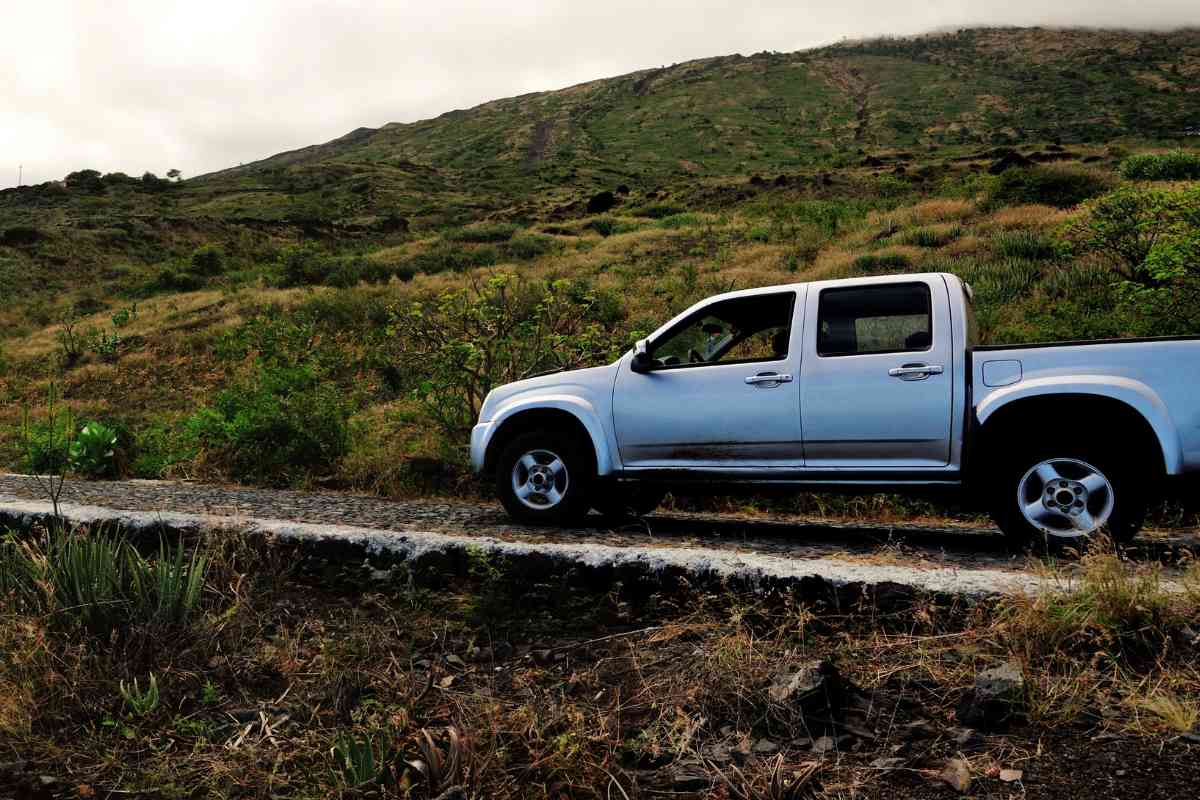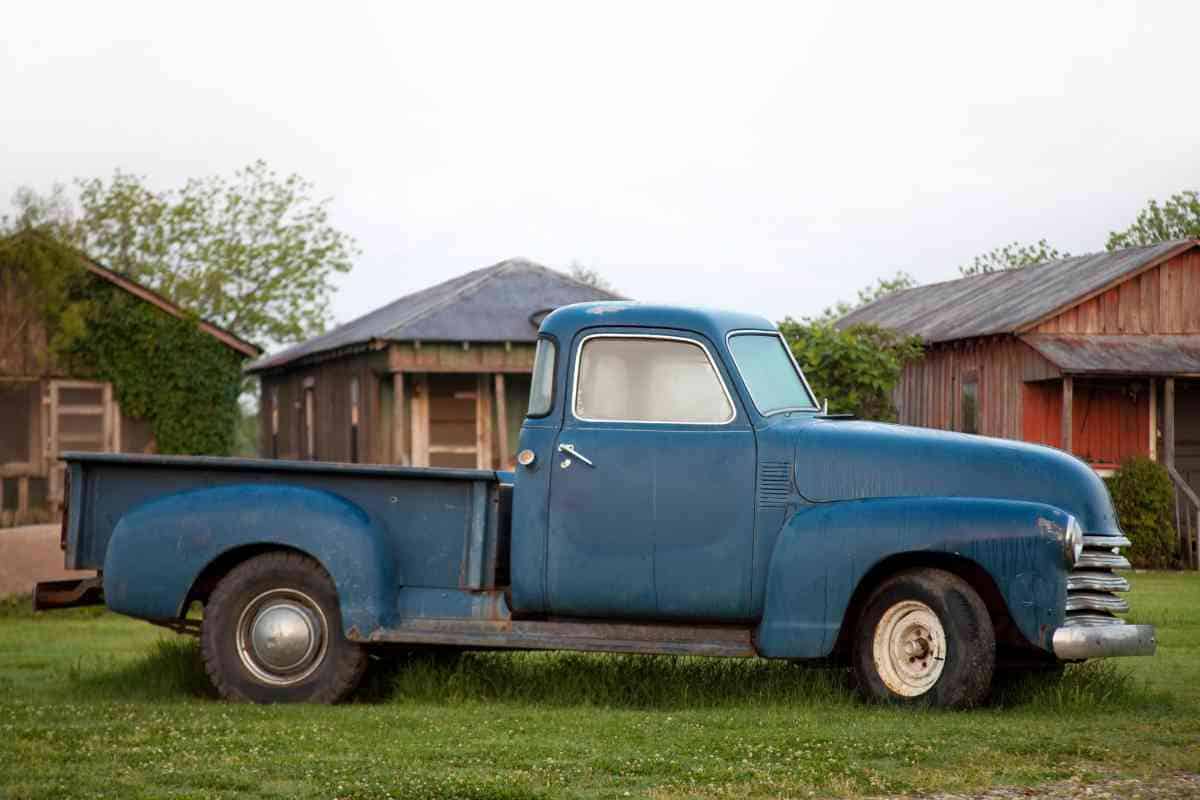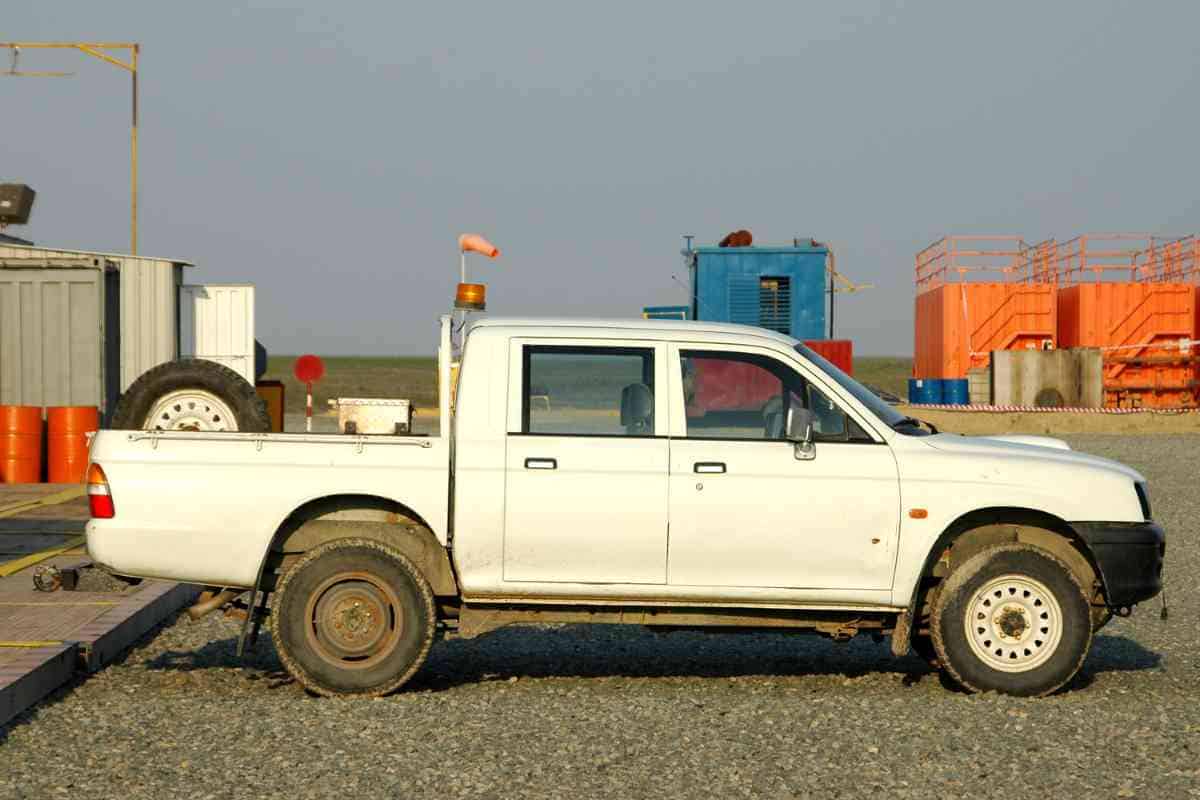What Is A Rake On A Truck? 4 Reasons A Rake Is Important
You just purchased a truck and discovered that the front end seems lower than the rear. What is a rake on a truck, and why is it important?
A rake is where the front of the truck is slightly lower than the back end. The design is intentional to help decrease the impact of a heavy load. (When a truck is loaded, the rear suspension sags to compensate for the weight). The rake can help to lower wind resistance and improve fuel economy.
Pickup trucks are built for hauling or towing. Due to their versatility, they are ideal for many different agricultural or industrial applications. Still, their design also means that the rear axles tend to support the heaviest loads, whether towing or carrying a payload.
Most truck designers try to compensate for this load-carrying capacity by bulking up the rear suspension. When unloaded, the truck’s rear is slightly higher than level; when loaded, the rear sags or shifts downward, resting slightly lower than the front.
Why is a Rake on a Pickup Truck Important?

There are several reasons why manufacturers design their pickup trucks with a rake.
Load Carrying Capacity
Every OEM truck is equipped with a rake, serving a purpose. Without any load in the cargo bed (or the weight of a trailer tongue), the pickup truck’s rear suspension tends to sit higher than the front.
When a payload is added, the rear “sags” (sits lower), and the truck tends to be more level. Some of the weight of the load is transferred to the front axle, helping the truck to move the load more efficiently.
A truck experiences the same thing when towing. A trailer is often towed by a hitch ball positioned on the truck’s rear.
When the tongue rests on the ball, the weight of the tongue pushes down on the rear of the truck, raising the front end of the truck. Many manufacturers encourage weight distribution hitches to help balance the trailer’s weight load.
Makes RWD More Efficient
Unlike many cars and SUVs that are front-wheel drive, most trucks continue to be powered by the rear wheels.
The rake can help ease a rear drivetrain’s struggle when trying to power a fully loaded truck. The more a load can be balanced, the better the truck can perform when hauling a heavy payload.
Reduces Wind Resistance
Most of the time, a pickup truck is on the road; it has an empty or nearly empty cargo bed. While there are times when an owner will be forced to haul a heavy load, those times are the exception rather than the rule in most cases.
Having the front end of a truck lower than the rear, allows the wind to move around the truck more aerodynamically.
Better Fuel Economy
When the wind resistance gets better, so does the gas mileage. While the gas savings is worse during a heavy load (it is what it is), engineers want to maximize the engine’s efficiency whenever there is no load being hauled (which is most of the time).
A lower nose helps save a few drops of fuel; over time, the savings can add up.
What is a Leveling Kit?

A leveling kit is a suspension adjustment designed to raise a truck’s front end to help balance out the factory rake.
For owners who rarely load their trucks with heavy cargo, the leveling will allow them to put larger tires on your truck. For more information about leveling kits and their benefits, see the article on fourwheeltrends.com
Most leveling kits use spacers inserted above the front suspension. The spacers are usually 1 – 3 inches in width, and the goal is to move the front of the truck up without affecting the front suspension too much.
A leveling kit is ideal if your truck will spend a lot of time on the road without carrying much cargo.
What is the Benefit of a Leveling Kit?
There are several benefits of installing a leveling kit on your truck.
Improved Ground Clearance
A leveling kit can improve ground clearance by raising the truck’s front bumper. This is especially helpful if you plan to put a winch on your pickup’s front. A leveling kit can help balance that extra weight.
More Aggressive Appearance
Since a leveling kit will allow for larger tires on the front to be used, your truck will have a more aggressive appearance.
Retains Factory Steering and Suspension
The great thing about a leveling kit is that none of your truck’s existing components will need to be replaced, removed, or modified. A leveling kit uses spacers that are strategically placed on top of the front-end springs, which allows for the factory-installed steering and suspension to work as it was intended to.
Improves Braking Performance
A leveling kit will balance the truck’s weight, providing a lower center of gravity. This lower center will mean a more efficient stop during an emergency braking situation.
This effect can be crucial if you need to apply the brakes suddenly.
Safer During an Accident
Since the truck’s nose is not pointing downward but is level after the installation of the kit, the truck is better able to absorb the effects of a front-end collision. This raising of the front means that crumple zones and wrinkle points can perform as intended by the engineers who designed them.
What Does A Leveling Kit Cost?
Depending on the shop, most kits can be installed for about $300 – $500. Don’t forget that your truck will need an alignment after the installation for safety reasons.
Are there any Negatives to a Leveling Kit?
About the only negative that a leveling kit creates is a decrease in mileage due to increased wind resistance.
With the truck’s front end raised, the grill encounters more resistance, translating into more energy needed to move the truck forward.
What is a Lift Kit?

A lift kit will raise the height of your truck by 1 – 7 inches, but instead of just raising the front, it raises the whole chassis and allows for larger tires and wheels to be installed. These kits are ideally suited for trucks used for off-road applications in mud or over rough terrain. The increased height allows for greater clearance under the truck, which means that the truck can navigate over rocks, ruts, and other rugged conditions.
Adding larger tires can help the truck handle more difficult road surfaces, so a lift kit provides an added benefit.
What Does it Cost for a Lift Kit?
A leveling kit will be much more expensive than a leveling kit. A lift kit is a modification of suspension and other components. In contrast, a leveling kit uses small spacers without modifying the factory-installed springs. Depending on the shop’s labor rates, you should expect to pay several thousand dollars for a lift kit to be installed.
Key Takeaways
- A rake is a lowered front end designed to balance the weight of heavy loads.
- A leveling kit can counter the effect of a rake on a truck
- A leveling kit uses spacers to lift the front end and balance the truck for the road
- A lift kit is preferred if the truck is driven off-road.
